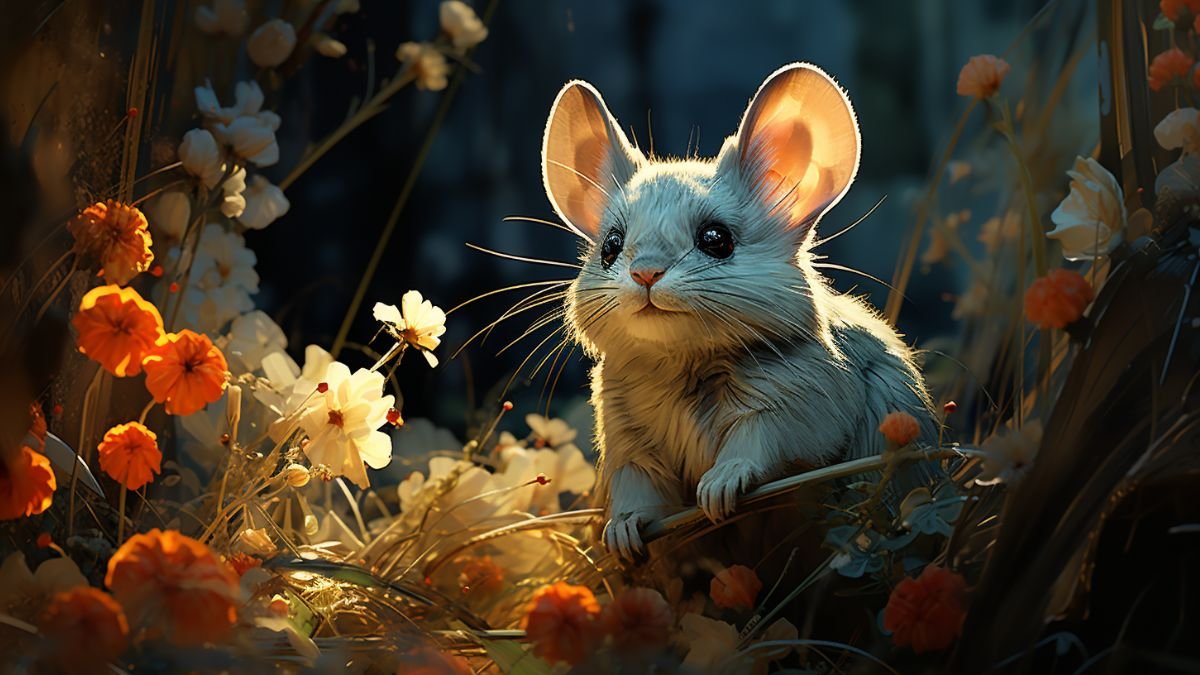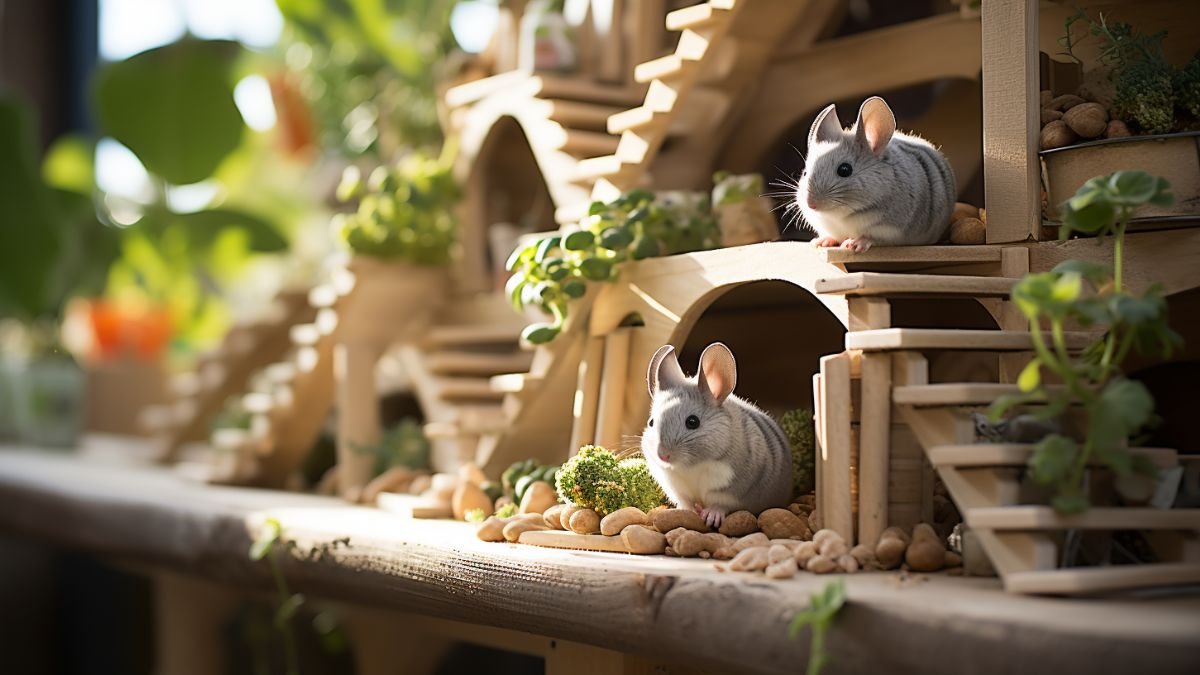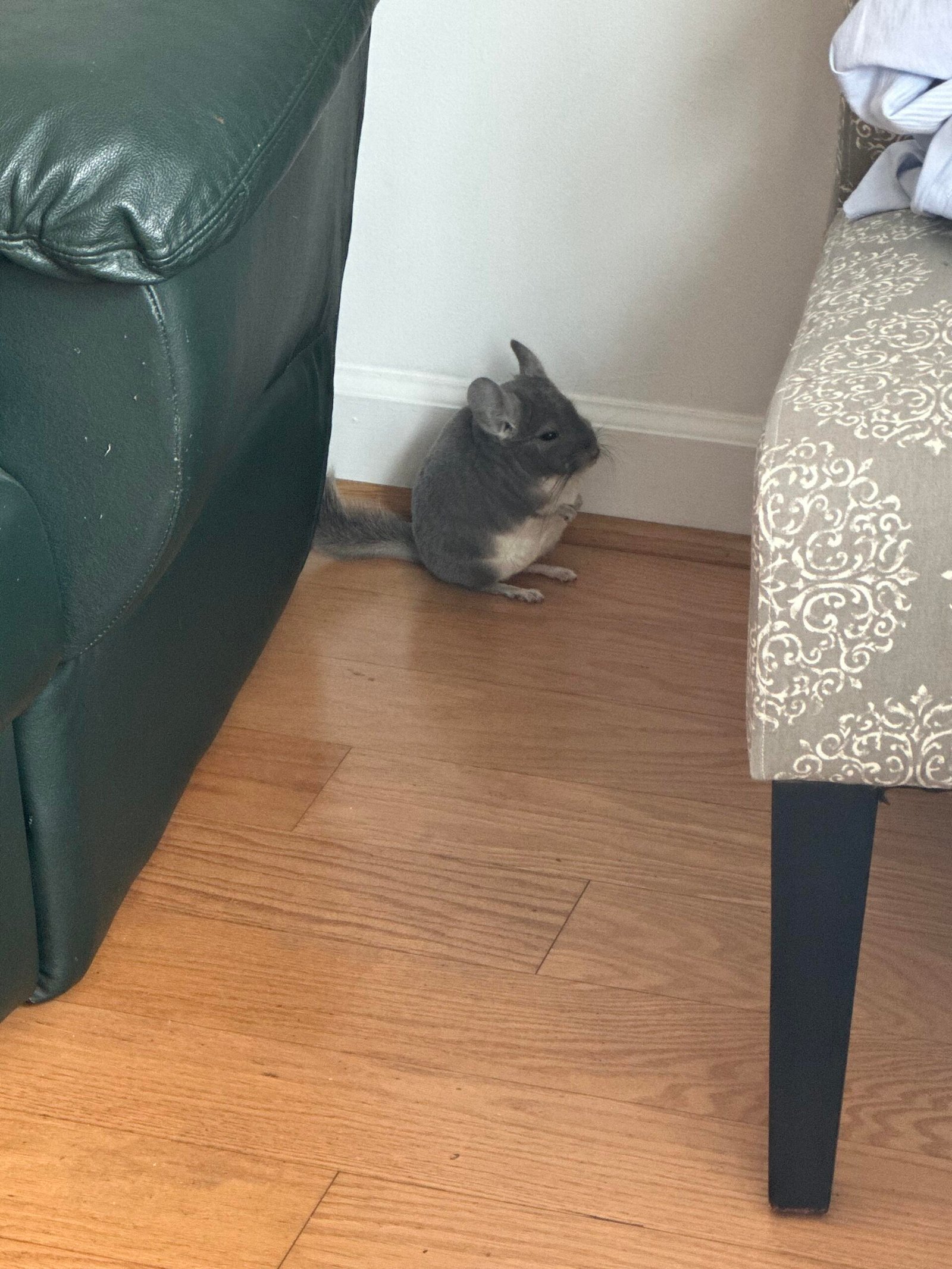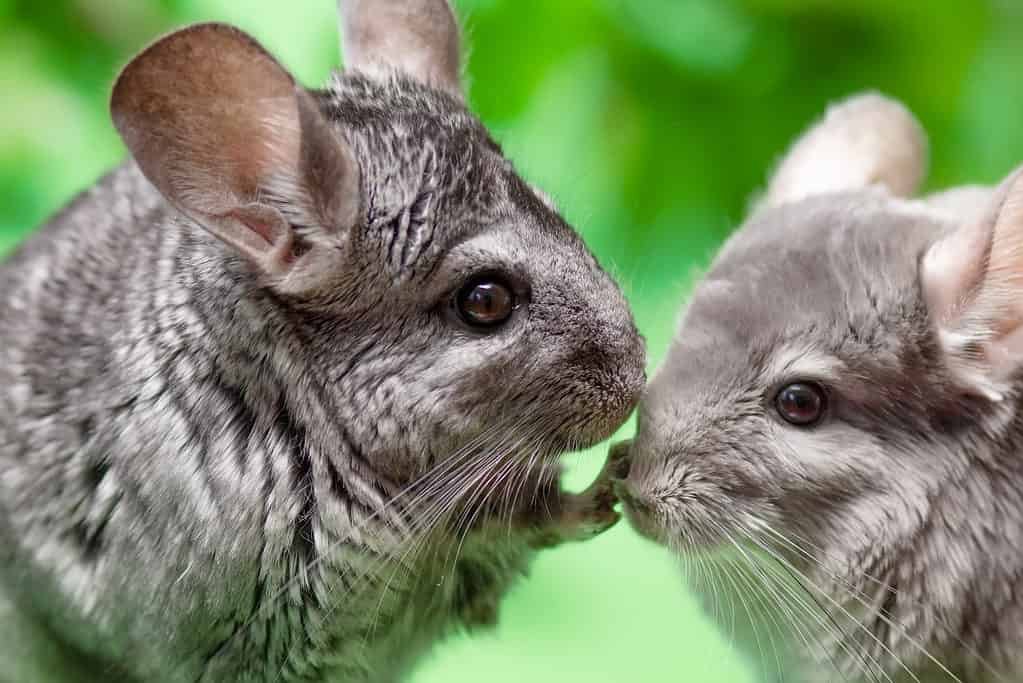
Traveling with your chinchilla can be tricky. You want to keep your furry friend safe and calm, but the stress of moving around can be overwhelming for them—and for you.
What if there was a simple way to make the journey easier for both of you? You’ll discover practical tips that help reduce your chinchilla’s travel anxiety. By the end, you’ll feel confident and prepared to make every trip smoother and less stressful.
Ready to learn how? Let’s dive in.

Choosing The Right Carrier
Choosing the right carrier is key for a calm chinchilla during travel. A proper carrier offers safety and comfort. It helps reduce your pet’s stress and anxiety. Picking a carrier is not just about size but also design and material.
Size And Space
Your chinchilla needs room to move but not too much space. A snug fit helps them feel secure. The carrier should be large enough to hold bedding and a water bottle. Avoid carriers that are too big or too small.
Material And Ventilation
Choose carriers made from sturdy, non-toxic materials. Good airflow is crucial to prevent overheating. Mesh sides or ventilation holes keep air fresh. Avoid carriers with sharp edges or loose parts.
Ease Of Cleaning
Travel can get messy. Pick a carrier that is easy to clean. Removable trays or washable liners save time. Clean carriers keep your chinchilla healthy and comfortable.
Secure Closures
Strong locks or zippers prevent escapes. Test closures before travel to ensure safety. Loose or weak closures can cause stress and risk your pet’s safety.
Preparing Your Chinchilla For Travel
Travel can be hard for chinchillas. Prepare their carrier with soft bedding and keep it calm and quiet. Offer water and avoid sudden moves to help them feel safe.
Choose The Right Travel Carrier
Select a carrier that fits your chinchilla comfortably. It should be well-ventilated and secure. Soft bedding inside helps your pet feel cozy. Avoid carriers that are too big or too small. A good carrier reduces anxiety during travel.
Introduce The Carrier Early
<plet a="" and="" before="" carrier="" carrier’s="" chinchilla="" create="" during="" explore="" familiar="" feelings.="" feels="" get="" helps="" inside="" less="" or="" p="" pet="" place="" positive="" scary="" smell="" space.="" the="" this="" to="" toys="" travel.Stick To A Routine
<pmaintain a="" and="" before="" better.Prepare The Carrier Environment
<padd a="" and="" avoid="" blanket.="" carrier="" carrier,="" carrier.`Packing Essentials For The Trip
Packing for a chinchilla trip needs care and thought. Chinchillas are small and delicate. They need comfort and safety during travel. Bringing the right items can reduce their stress. It also helps keep them calm and healthy. Prepare a bag with all essentials to make the trip smooth.
Packing A Secure Travel Carrier
Choose a small, sturdy carrier with good ventilation. The carrier should be escape-proof but cozy. Line the bottom with soft bedding. Avoid anything that can hurt their feet or cause discomfort. A carrier with a solid base keeps chinchillas safe on the move.
Food And Water Supplies
Bring enough chinchilla pellets and hay for the trip. Pack fresh water in a leak-proof bottle. Avoid sudden food changes to prevent stomach upset. Carry a small bowl or water bottle that chinchillas can easily use.
Comfort Items And Toys
Include familiar toys or chew sticks to keep chinchillas calm. A small blanket or towel from home adds comfort. These familiar smells help reduce anxiety during travel. Keep their environment as close to home as possible.
Temperature Control Tools
Chinchillas cannot tolerate heat well. Pack a small cooling pad or ice pack wrapped in cloth. Avoid direct contact with chinchillas to prevent cold burns. Keep the carrier in a cool, shaded place throughout the trip.
Maintaining Temperature And Comfort
Travel can be hard on chinchillas. They need a steady temperature and cozy space to feel calm. Keeping their environment just right stops stress and keeps them safe. This section helps you keep your chinchilla warm, cool, and comfy during trips.
Control The Travel Temperature
Chinchillas do best in cool places. The ideal temperature is between 60°F and 70°F. Avoid hot cars or direct sunlight. Use air conditioning or fans for airflow. Check the temperature often to keep it steady.
Use Soft Bedding And Padding
Soft bedding makes chinchillas feel secure. Use materials like fleece or soft towels. Padding cushions their cage and stops bumps. Change bedding regularly to keep it clean and dry.
Choose The Right Travel Cage
Pick a cage with good ventilation but no drafts. It should be sturdy and cozy inside. Small enough to feel safe, big enough to move around. Add familiar items like toys or hiding spots.
Keep Hydration And Comfort Items Close
Bring fresh water in a secure bottle. Offer food and treats they like. Carry a small blanket or cloth with their scent. These help chinchillas stay calm and relaxed during travel.
Minimizing Noise And Vibrations
Travel can be very stressful for chinchillas. Loud noises and strong vibrations make them anxious. Minimizing these factors helps keep chinchillas calm. A quiet, stable environment reduces their fear. This section explains how to reduce noise and vibrations effectively.
Use Soft Padding Inside The Carrier
Place soft materials like fleece or towels inside the travel carrier. These materials absorb noise and cushion vibrations. A padded floor makes the ride smoother. It also helps reduce rattling sounds from the carrier.
Choose A Quiet Travel Route
Pick roads with less traffic and fewer bumps. Smooth roads cause fewer vibrations. Avoid highways with loud trucks and noisy vehicles. A calm route means less noise and shaking for your chinchilla.
Keep The Carrier Covered
Cover the carrier with a light cloth or blanket. This blocks out bright lights and some noise. It creates a dark, quiet space inside. Your chinchilla feels safer and less stressed.
Drive Slowly And Carefully
Drive at moderate speeds and avoid sudden stops. Gentle driving reduces shaking inside the car. Smooth turns and slow acceleration help keep vibrations low. This makes the ride more comfortable for your chinchilla.
Limit Noisy Distractions
Turn off loud music and avoid loud conversations near the carrier. Keep the travel area as quiet as possible. Lower noise levels help your chinchilla stay calm. Silence is one of the best comforts during travel.
Feeding And Hydration Tips
Traveling can be hard for chinchillas, especially with feeding and water needs. Keeping their diet and hydration steady helps reduce stress. Planning meals and water access is key to a calm trip.
Provide Familiar Food
Bring your chinchilla’s usual food on the trip. New foods might upset their stomach. Use the same pellets and hay they eat at home. This keeps their digestion steady and avoids discomfort.
Offer Small, Frequent Meals
Feed small amounts often to keep energy up. This prevents hunger and helps your chinchilla feel safe. Avoid large meals during travel to reduce stress on their tummy.
Ensure Fresh Water Availability
Water is crucial for chinchillas on the move. Use a spill-proof water bottle or bowl. Check water often to keep it clean and full. Dehydration can cause serious health problems.
Monitor Eating And Drinking Habits
Watch your chinchilla’s food and water intake closely. A drop in eating or drinking may signal stress. Adjust feeding times or amounts if needed. Early care helps avoid bigger issues.
Handling Stops And Breaks
Handling stops and breaks during travel can help keep chinchillas calm. These small animals feel safe in familiar surroundings. Sudden changes or loud noises can cause stress. Planning breaks carefully can make the journey smoother for your pet.
Choosing Safe And Quiet Rest Areas
Select rest stops away from busy roads and loud noises. Quiet places reduce fear and anxiety in chinchillas. Avoid crowded or noisy gas stations. Parks or calm rest areas work well.
Keeping Chinchillas Secure During Breaks
Always keep your chinchilla inside its travel cage. Do not let it roam freely. Use a sturdy, well-ventilated carrier with secure locks. This prevents escapes and protects your pet from harm.
Providing Water And Comfort
Offer fresh water during longer stops. Use a small, spill-proof water bottle. Avoid feeding too much during breaks to prevent digestive issues. Check the cage’s bedding to keep it clean and dry.
Minimizing Noise And Sudden Movements
Speak softly near your chinchilla to avoid startling it. Avoid loud music or sudden noises. Move slowly and gently around the cage. This helps maintain a calm environment during breaks.
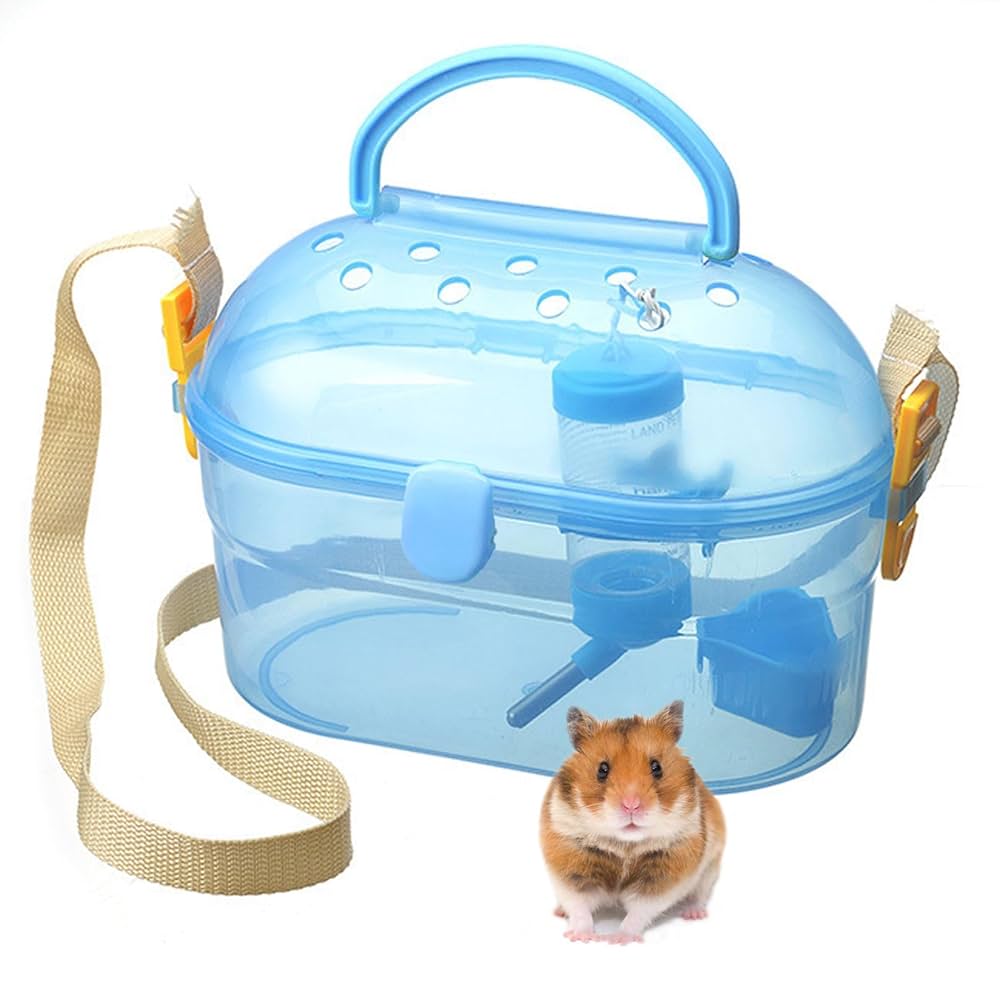
Monitoring Stress Signs
Travel can be hard for chinchillas. They get nervous in new places. Watching for stress signs helps keep them calm. It also stops problems before they grow. Knowing what to watch for is very important.
Recognizing Changes In Behavior
Chinchillas may act different when stressed. They might hide more than usual. Some may stop eating or drinking. Others could become restless or jump a lot. Watch their usual habits closely. Any change could mean stress.
Observing Physical Signs
Stress can show on their bodies too. Look for quick breathing or heavy panting. Their fur might look messy or puffed up. Shaking or trembling is another sign. Check their eyes for redness or squinting.
Listening For Vocal Cues
Chinchillas use sounds to show feelings. High-pitched squeaks often mean discomfort. Quiet whining or grunting can signal stress. Notice if your chinchilla is more vocal than normal. These sounds help you understand how they feel.
Monitoring Eating And Drinking Habits
Stress often changes appetite. A stressed chinchilla may eat less or stop drinking. Keep track of how much food and water they consume. Sudden drops in eating or drinking need attention. This can prevent serious health issues.
Post-travel Care For Chinchillas
Travel can be hard on chinchillas. Their small size and delicate nature mean they need special care after trips. Post-travel care helps them settle back into their home environment. It also reduces stress and keeps them healthy.
Checking your chinchilla right after travel is very important. It helps spot any signs of stress or illness early. A calm and quiet space will help them feel safe. Fresh water and food encourage them to eat and drink again.
Provide A Quiet And Comfortable Space
Place your chinchilla in a calm room with low noise. Avoid bright lights and sudden movements. Make sure their cage is clean and cozy. Soft bedding and familiar toys help comfort them.
Offer Fresh Water And Nutritious Food
Travel can make chinchillas lose appetite. Offer fresh water immediately after travel. Provide their usual food to encourage eating. Avoid new treats until they feel better.
Monitor Health And Behavior Closely
Watch for changes in eating or bathroom habits. Look for signs of breathing problems or lethargy. Note any unusual behavior like hiding or restlessness. Contact a vet if you see any worrying signs.
Allow Time To Rest And Adjust
Rest is key for recovery after travel. Avoid handling your chinchilla too much at first. Let them explore their space slowly. Give at least a day or two to relax fully.

Frequently Asked Questions
How Can I Prepare My Chinchilla For Travel?
Start by getting your chinchilla used to its travel cage slowly before the trip.
What Type Of Carrier Is Best For Chinchilla Travel?
A sturdy, well-ventilated carrier with soft bedding works best to keep chinchillas comfortable.
How Long Should Chinchilla Travel Sessions Be?
Keep travel sessions short, ideally under two hours, to reduce stress for chinchillas.
Should I Feed My Chinchilla Before Traveling?
Feed your chinchilla a small meal a few hours before travel to avoid nausea.
How Do I Keep My Chinchilla Calm During Travel?
Speak softly and cover the carrier with a light cloth to create a calm space.
Can Chinchillas Drink Water While Traveling?
Provide water before travel; avoid giving water during the trip to prevent spills.
Is Temperature Control Important When Traveling With Chinchillas?
Yes, keep the carrier in a cool, shaded place to prevent overheating.
What Should I Do After Travel To Help My Chinchilla Relax?
Let your chinchilla rest in a quiet, familiar area with fresh food and water.
Conclusion
Travel can be less stressful for your chinchilla with simple steps. Prepare their travel space carefully and keep it quiet. Bring familiar items to help them feel safe. Keep the temperature steady and avoid sudden movements. Give your chinchilla time to rest after the trip.
Small efforts make a big difference in their comfort. Enjoy your journey knowing your pet feels calm and secure. Traveling with chinchillas can be smooth and worry-free.




